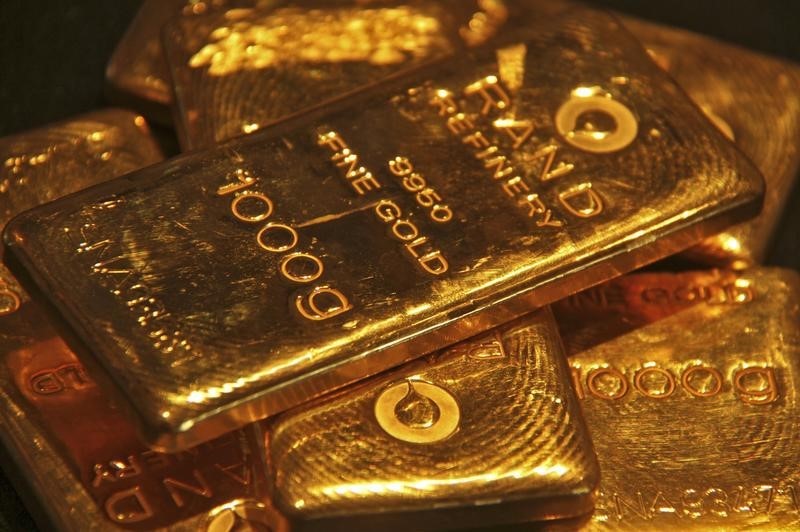Investing.com — Gold prices fell Monday as the prospect of deep interest rate cuts by the Federal Reserve faded following stronger-than-expected nonfarm payrolls data that supported the dollar.
At 3:57 PM ET (20:57 GMT), the price was down 1% at $2,662.20 per ounce, while the February term was down 1.3% at $2,680.01 per ounce.
Gold under pressure due to increased interest rate fluctuations; inflation data were expected
Gold prices were mainly pressured by the prospect of US interest rates staying higher for longer, after traders further scaled back their bets on rate cuts this year.
The focus now is on upcoming US inflation data, due on Wednesday, for more clues about the Fed’s interest rate outlook. The central bank indicated that persistent inflation and the strong labor market will give it more impetus to keep interest rates high.
Analysts at Goldman Sachs said in a recent note that they now expect the Fed to cut rates only twice this year, compared with previous expectations of three cuts. The central bank’s final interest rate is also expected to be higher in this easing cycle.
Uncertainty about the economic outlook under incoming President Donald Trump continued to maintain some safe-haven demand for gold, as did a prolonged sell-off in broader risk-driven assets, especially equities. This limited the overall losses in the yellow metal.
Higher interest rates are putting pressure on metals markets by increasing the opportunity cost of investing in non-performing assets. Among other precious metals, the price fell 2.6% to $970.35 per ounce, while on Monday it fell 3.3% to $30.282 per ounce.
Copper prices are rising as markets weigh China’s prospects
The benchmark on the London Metal Exchange rose 0.2% to $9,098.00 an ounce, while March rose 0.4% to $4.3217 a pound.
The red metal contributed to strong gains from the previous week as soft Chinese economic data fueled expectations that Beijing will unlock even more stimulus measures to support growth.
Trade data on Monday showed China’s copper imports hit a 13-month high of 559,000 tonnes in December, indicating demand remained robust at the world’s largest copper importer.
Copper bulls are betting that Beijing will deliver even more stimulus in the coming months, especially in light of high tariffs under Trump.
Trump – who will take power on January 20 – has promised to impose steep trade tariffs on China from “day one” of his presidency.
(Peter Nurse contributed to this article.)


